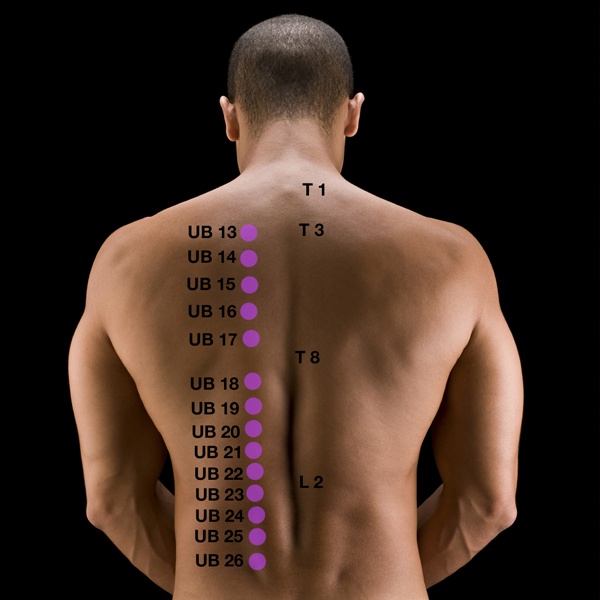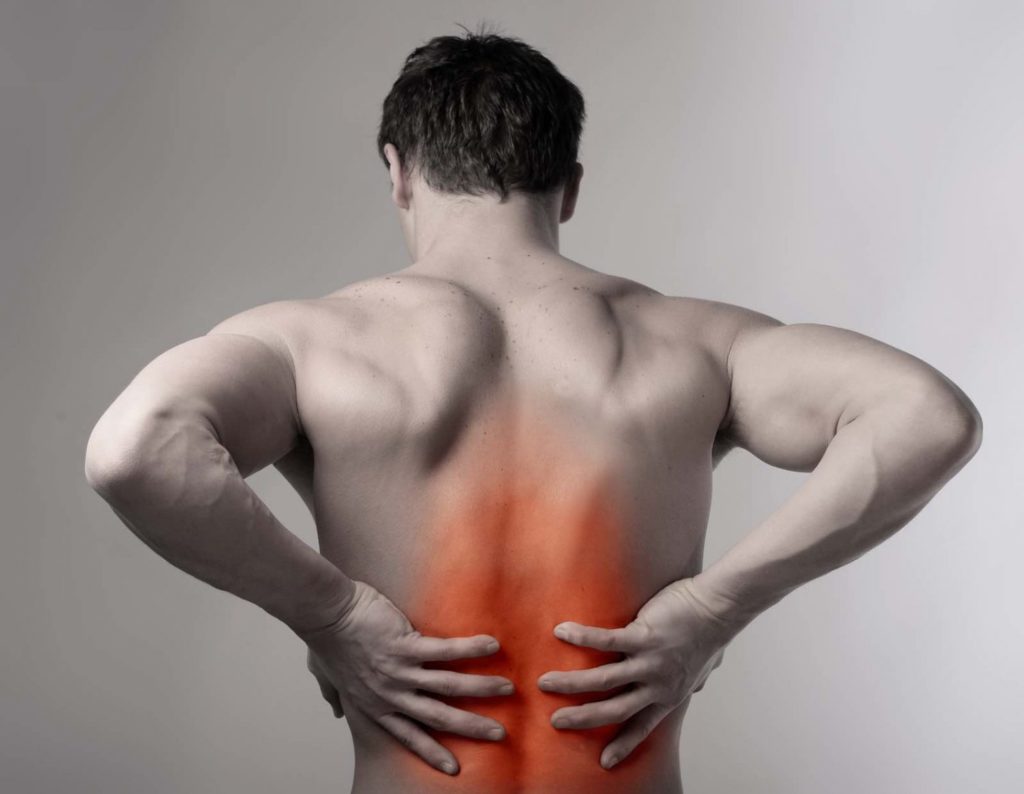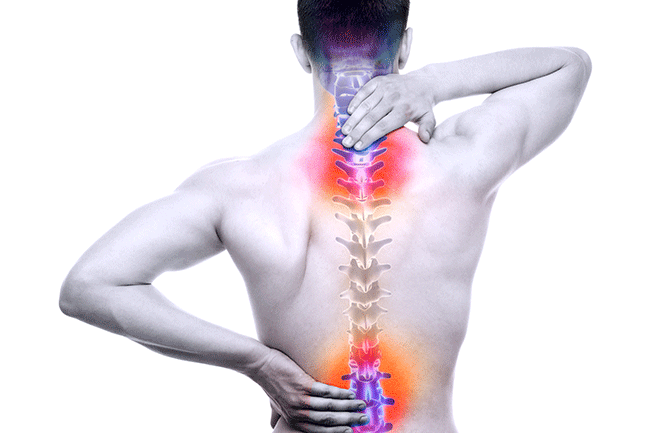
Unravelling Back Pain: Acupuncture Wisdom to Stop the Strain
Back pain is perhaps the most common ailment modernly treated by acupuncture. It can result from many sources. Back pain that doesn’t respond to standard Western treatment can be rooted in psychosomatics: the mind impacting the physical body. But acupuncture is also very effective in treating strain from overwork or pain from injury.
Acupuncture works to relax and reorient the muscles, resolve injury and even stop degeneration. It can also clear mental-emotional stress and trauma that may be translocating itself into the physical body to cause pain and distress.
There are a set of acupuncture points with strong resonance between the mind and body. I like to think of these points as the first avenue for treating psychosomatic issues. The name of these acupuncture points are Luo Vessels.
The word Luo means connecting vessel, which has several connotations. They are vessels that connect two paired/partner acupuncture channels, like the Lungs and Large Intestine. They also connect the realm of the mental-emotional internal energy level, called Ying, to that of the instinctual more physicalized energy level, called Wei. The Luo Vessels can translocate issues from the mental level onto the surface anatomy of the body: the muscles, blood vessels, sinews, tendons and sensory orifices.
There are two particular Luo Vessels that commonly affect the lower back: Kidney-4 (KI-4), the “Great Bell” located on the foot and Bladder-58 (BL-58) “Flying Away” on the lower leg.
When Kidney-4 is contending with a mental emotional issue, and trying to suppress it there can be pain in the back that feels stabbing. It is usually complicated by difficulty in urination or defecation. When Bladder-58 is affected, the pain in the back can be more of an achy nature, usually complicated by headaches or pain elsewhere in the back or shoulders, as well as sinus issues.
The psychological issue commonly associated with both of these points relate to fear, obsessiveness and anxiety. Kidney-4 often relates to obsessive-compulsive tendencies and paranoia. While Bladder-58 relates to overwhelm, manifesting as not knowing our limits and going beyond them, sometimes in an obsessive addictive way, or being in a constant state of panic and overwhelm where everything bothers and stresses their system.
The lower back is a place that is commonly reactive to stress around money, support, the ability to stand up to the demands of life. It is the center of our strength and vitality; the place where we take “a hit” when we feel disempowered, overwhelmed, over-extended, over-worked or exhausted. The low back is also the residence of the Kidneys which according to Chinese medicine are organs that resonant with the emotion of fear.
Fear is one of the most primal emotions. It relates to survival. It can manifest a state of “fight or flight,” which is what the name of Bladder-58 is referencing: flying away. Whereas KI-4 creates more of a fight reaction which manifests in obsessive-compulsive behavior, often with the “fight” energy retrograding inward to damage oneself.
The Luo Vessels have the benefit of accessing blood circulation, which according to Chinese medicine allows a level of conscious awareness to the psychological issues causing the physical problem. By treating KI-4 and BL-58 the awareness of the issue will become more pronounced, so the person will ideally be able to release and resolve it. Then the physical expression coming from it will disappear.
When an issue becomes too overwhelming to deal with, or lasts too long, it will exhaust the body and often go into a repressed state, losing conscious awareness. Energetically this occurs when unresolved issues move from the Luo Vessels, which manage blood circulation into a deeper set of acupuncture channels, called the Divergent Channels. The Divergent Channels place unresolved issues in deeper, denser areas of the body, usually the joints and bony regions. Two of the most common areas for unresolved issues to get stored are the sacrum in the lower back and the scapula in the upper back.
The art of acupuncture is to identify where a problem is located: how deeply it has penetrated into the body. Is it still accessible via blood circulation or does treatment need to start opening up the joints and draining pathology from the bones?
There are holes in the sacrum: foramen. Throughout the body there are several holes in the bones, called “Liao” in Chinese medicine. Movement of pathology into the Liao is often seen as the cause of degenerative conditions. While a problem may be hidden in the bones, it will create stagnation pressure and heat which will slowly consume and degenerate the tissues of the body. Treatment of degenerative conditions often requires draining pathology from the Liao in the bones and joints.
In addition to the holes in the sacrum, the region of the knees is very important in clearing strain from the lower back. There are many powerful acupuncture points located around the knees that have a strong effect on easing back pain. The most powerful is BL-40 at the back of the knee. This point is designated the “command point” for the low back due to its effectiveness in easing back pain.
The spirit of BL-40, called the “equilibrium center,” is a point that provides stability for the center of the body: the core. Tilting of the pelvis can often be a sign that a person is off-center, not in their body, excessively worrying or obsessing, or in a state of anxiety. When the pelvis is tilted, this will cause the belly to puff out, putting strain on the low back. The postural change is often due to an internal conflict. By using BL-40, the physical tension in the low back is eased; it also readjusts the pelvic tip and reduces anxiety by putting the person back into their body.
Another acupuncture point located around the knees is KI-10, the “Yin Valley.” The name of this point relates to that which may be hidden and heavy (Yin), such as repressed fear, anxiety, internal cold and dampness which can weigh heavy on the lower back and decrease vital energy reserves. KI-10 is highly effective for pain and heaviness that radiates from the lower back around the belt into the lower abdomen and entire pelvic region. Using this point will often cause detox and draining of cold and dampness from the lumbar-pelvic region through urination.
Points on the knees usually don’t provide a cognitive awareness of issues affecting the lower back as do the points on the legs and feet mentioned earlier. They are points the release pathology from the Divergent Channels, from regions of deep repression, often located in the joints and bony regions. It is not always necessary or preferable for awareness to emerge during healing, especially if the issues were traumatic enough to cause a state of deep repression. It can be best to just drain them out physically. Or perhaps the trauma that damaged the low back was purely physical, due to overwork, strain or injury. In these cases, there is no need for a cognitive catharsis, but just a release of the damage and debris.
Pain in general is classically diagnosed according to movement assessment in Chinese medicine. It is also assessed according to the quality of the pain or discomforted, and treated accordingly. Pain that is fixed is associated with cold stagnation; pain that moves, radiates or travels is associated with “wind” which can mean nerve involvement. Pain that feels heavy or achy is associated with dampness. Pain that is hot to the touch and feels burning is associated with heat inflammation. Pain that is stabbing is usually caused by blood stasis.
Pain that is elicited on extension would best be treated with the points on the Bladder channel, including BL-40 and BL-58. Pain that comes with rotation is best treated by Gallbladder, especially the point GB-34 at the knee. Pain that arises from standing or weight-bearing is treated by the Stomach, especially the point ST-36 at the knee.
It is standard to treat the lower back with points on the knee. This is advised by the Chinese medical classic Su Wen, simple questions. When points on the toes are added to the treatment, the elimination of pain and discomfort can be even stronger.
The points around the knees are called “He Sea” in classical Chinese medicine. It is said that He Sea points help to eliminate stagnation within the bowel organs. Problems in the bowels are often translocated into the joints via the Divergent Channels. Therefore to treat pain stagnation within the joints and boney regions, it is also necessary to clear the bowels. He Sea points do both. Pain in the back can often come from improper elimination. BL-40 is also the major point to treat skin conditions, which also frequently result from digestive dysfunction.
Points on the toes are called Jing Well, which have a strong clearing effect on the muscles. They are also chosen according to movement assessment.
In addition to He Sea and Jing Well points (knees and toes), there is another class of points that have a strong calming effect on pain. These points are called Xi Cleft points. The name of these points mean emergency situations where a strong change is needed fast.
The destination of the acupuncture points is based on a Waterway system. The Sea being the points that reach deepest into the body: into the organs themselves. The Well is more surface, treating the muscle layer, which is relatively superficial.
The point BL-63 is amongst the strongest Xi Cleft points to treat acute back pain. BL-59 is also effective.














No Comments